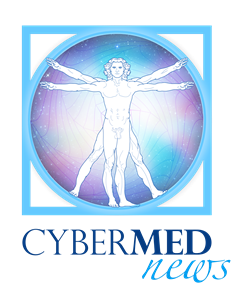 Share on Facebook
Share on Facebook

I've been suffering from hives for nearly a year now. I take really strong antihistamines, but they don't seem to make much difference. Can you recommend any natural remedies?
T.R., via email
Hives—a raised itchy skin rash that can appear anywhere on the body—affects 15 to 20 percent of the population at least once in their lifes. In most cases, symptoms disappear within 24 hours, never to return. But for around a third of sufferers, hives, or "urticaria" as it's also known, is a persistent problem for months or even years. Hives is considered chronic when attacks occur at least twice a week for six weeks.1
The usual treatment is oral antihistamines or steroids, but as you know, the drugs don't always work,2 and, especially in the case of steroids, they can cause a load of well-known side-effects.
Ultimately, the best way to treat chronic hives is to work out what's causing the condition, but this can be extremely hard to do. Most cases of chronic hives are considered "idiopathic," i.e. having no known cause.3 But research is mounting to show that a variety of fixable factors, such as diet and nutritional deficiencies, may help to solve the puzzle of this distressing skin condition.
Ideally, consult with an experienced functional medicine practitioner, who can help you with the detective work and organize appropriate testing. But here's our guide to the best solutions for hives.
Follow an elimination diet
Food allergies, sensitivities and intolerances are a common cause of hives, especially in chronic cases, so work with a knowledgeable practitioner to figure out your potential triggers and best diet plan. In one study, an exclusion diet avoiding preservatives, dyes and natural symptom-provoking foods and drinks, such as tomatoes and wine, led to complete remission in over 70 percent of chronic hives sufferers.4 Some usual suspects to watch out for include artificial food additives, salicylates (see box, below), alcohol, herbs, shellfish and nuts.3
Salicylate sources
According to functional medicine doctor Sarah Myhill, salicylates—a group of chemicals found naturally in many foods and also synthetically produced—are a key cause of hives. So, try avoiding salicylate sources such as:
Fruit: avocado, banana, citrus fruit, grapes, kiwi, papaya, peach, pineapple, plum, tomato
Vegetables: artichoke, chicory, cucumber, endive, spinach, water chestnuts, zucchini (courgette)
Nuts: almonds, peanuts, pistachios
Other: artificial colors and flavorings, aspirin, skincare or other personal care items containing salicylic acid
Mind your meds
As well as aspirin, several medications can cause hives or make the problem worse. These include nonsteroidal anti-inflammatory drugs (NSAIDs), opioids, ACE inhibitors, codeine, morphine and oral contraceptives.3
Dose up on D
Low levels of vitamin D have been linked to chronic hives,5 and taking high-dose supplements of the "sunshine vitamin" on top of standard medication can significantly improve symptoms.6 You could start taking vitamin D supplements straight away, but the best course of action is to get your levels tested first. Home testing kits are available via the Vitamin D Society (www.vitamindsociety.org) and Better You (www.betteryou.com), along with personalized advice on the right dose for supplementation.
Up your iron
Some two-thirds of patients with chronic hives may have low iron levels, and restoring levels to normal via supplements can lead to complete remission of hives or at least a dramatic improvement in most cases.7 Get your iron levels tested and work with a practitioner who can recommend specific supplements and dosages to make sure you're getting enough of this essential mineral.
Take natural antihistamines
The following have a natural antihistamine effect in the body, so taking them in supplement form may be helpful for hives.
Quercetin 11
Suggested dosage: 250-600 mg three times a day, 5-10 minutes before meals
Vitamin C 12
Suggested dosage: 2-4 g/day
Green tea13
Suggested dosage: choose a high-quality extract including epigallocatechin gallate (EGCG) and follow the label instructions
Address stress
Psychological stress is known to play a role in numerous skin conditions, including hives,8 so anything you can do to ease stress in your life could be beneficial for your skin. In fact, relaxation and hypnosis proved helpful for hives in one study.9 Consider stress-reduction methods such as meditation, yoga, tai chi or even just listening to relaxing music.
Ease the itch
For instant relief of the itching, try an all-natural, skin-soothing, anti-inflammatory cream or ointment, such as Lyonsleaf Zinc and Calendula Cream or Balmonds Skin Salvation Balm, both carefully formulated for irritated, itchy skin and available from www.lovelula.com.
Check your thyroid
Having an underactive thyroid, especially Hashimoto's disease—when your immune system attacks your thyroid gland—may be a trigger for chronic hives.10 Get your thyroid hormones tested and, if needed, work with an experienced holistic practitioner to optimize your thyroid function. See our October 2019 issue for how to deal with Hashimoto's.
Try acupuncture
The traditional Chinese technique of acupuncture may be helpful for hives.14 To find a qualified acupuncturist near you, visit www.acunow.org.
Get help from herbs
Herbalist Meilyr James, owner of the Herbal Clinic in Swansea, Wales (www.herbalclinic-swansea.co.uk), recommends the following for hives.
For topical use:
Stelleria media (chickweed). Use this soothing herb as a lotion, ointment or cream.
Lavender essential oil. Use one or two drops directly on the skin for immediate relief. But do not apply undiluted to broken or sensitive skin.
For internal use:
Urtica dioica (nettle). "Nettles have an antihistamine effect, helping to relieve allergies and inflammation," says James. "You can pick your own nettles to make a fresh tea (use gloves to avoid getting stung and pick from areas as free from pollutants as possible) or use dried herbs if you prefer." See right for instructions.
Nettle tea recipe
Fresh herbs
1) Use roughly a handful of nettle tops per mug of boiling water
2) Allow to infuse for 15 minutes in a teapot
3) Drink regularly throughout the day
4) If you dislike the taste, add a little fresh mint and honey
Dried herbs
1.76 oz/50 g Urtica dioica (nettle)
0.88 oz/25 g Chamomilla recutita (German chamomile)
0.88 oz/25 g Trifolium pratense (red clover)
1 Combine the dried herbs in a container
2 Use one heaped tablespoon of herbs to one large mug of boiling water
3 Infuse in a teapot for 15 to 20 minutes, covered with a lid
4 Drink half a mug (about 7 fl oz/ 200 mL) three times daily and reduce on relief
References
1 J Am Acad Dermatol, 2002; 46: 645-57
2 Clin Exp Dermatol, 2007; 32: 34-8; J Investig Allergol Clin Immunol, 2010; 20: 386-90
3 Indian J Dermatol, 2011; 56: 622-8
4 Exp Dermatol, 1998; 7: 139-42
5 Clin Transl Allergy, 2018; 8: 51
6 Ann Allergy Asthma Immunol, 2014; 112: 376-82; Dermatoendocrinol, 2014; 6: e29727
7 Dermatol Ther, 2014; 27: 223-6
8 Ann Dermatol Venereol, 2003; 130 Spec No 1: 1S145-59
9 Arch Dermatol, 1987; 123: 913-6
10 Rev Alerg Mex, 2019; 66: 403-8; Allergol Immunopathol (Madr), 2015; 43: 249-53
11 Molecules, 2016; 21: 623
12 J Nutr, 1980; 110: 662-8; J Am Coll Nutr, 1992; 11: 172-6
13 J Physiol Biochem, 2010; 66: 265-70
14 Biomed Res Int, 2016; 2016: 5191729
https://www.wddty.com/lifestyle/2020/04/natural-help-for-hives.html



